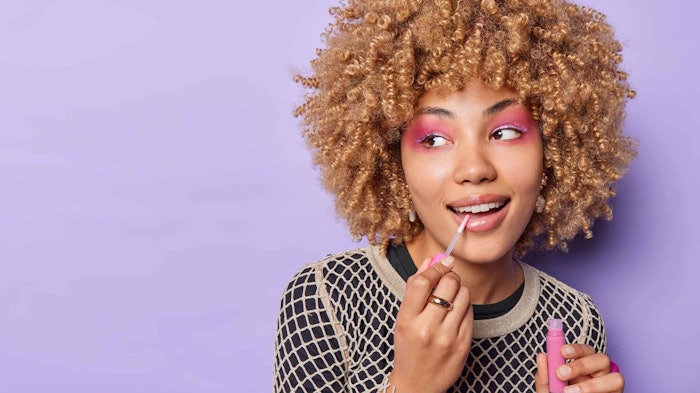
Active color cosmetics with functions extending beyond coverage, e.g., moisturizing, sun protection, anti-aging, etc., are expected to grow the color segment to nearly US $87.92 billion by 2034, according to Future Market Insights. The firm also notes that increasing demand for personalized products creates significant opportunity.1 A trending TikTok video exemplifies one such product:2 Pixi’s On-the-Glow Blush Stick, whose nourishing and hydrating solid formula additionally features pH-reactive pigment. Users can apply it to the cheeks and/or lips for a personalized color-plus-care care experience.
It’s interesting to consider how far cosmetics have come to meet consumer demand for biological effects despite regulatory constraints. Per the FD&C Act of 1938, cosmetics were intended only for cleansing, beautifying, promoting attractiveness or altering appearance – without affecting the body’s structure or function.3 In 1984, Kligman introduced the idea of cosmeceuticals, suggesting cosmetics could do much more – although the U.S. Food and Drug Administration (FDA) still doesn’t recognize this term, even with recent tweaks by the Modernization of Cosmetics Act (MoCRA).3
While regulators remain wrapped up in red tape, the industry has moved on with multifunctional products and carefully worded claims, e.g., to help improve the appearance of … It is in this scenario where today’s color cosmetics find themselves: hybridized with skin care to perform additional activities. There’s also something to be said for the creativity of formulators who are leveraging both the immediate hiding effects of color cosmetics and their longer contact with skin to impart consumer-perceivable benefits in the short and long term.
Our latest edition of Cosmetics & Toiletries salutes color cosmetics innovation, sharing trends and insights to help formulators elevate traditional color and hybridized formulas; see Lionetti and Expert Opinions for more. Furthermore, innovating in this burgeoning category is certainly not without its challenges. As Hollenberg explains, recent bans in the EU on D4, D5 and D6 and microplastics will shake the very foundation of color formulas, pressing formulators to rethink the tools they have used for decades.
Also thinking in terms of alternative ingredient innovation, Ghadim explores the emergence of biotech – e.g., plant stem cells, archaeosomes and bacteriophages – as does Yaiser, in terms of marine ingredients. The winners of the C&T Allē Awards offer additional inspiration as well; the program highlights ingenuity and scientific acumen in the development of cosmetic ingredients, chassis/blends, testing methods, devices and digital technologies.
As a bonus, Bozich defines biodegradability in beauty from a technical perspective, while Steventon looks to cleansing for skin health, radiance and acne control. We hope our latest issue brings vivid ideas to your color formulas and beauty innovating.
References
1. https://www.futuremarketinsights.com/reports/colour-cosmetics-market
2. https://www.tiktok.com/@missdarcei/video/7342988169161280773
3. https://www.fda.gov/cosmetics/cosmetics-laws-regulations/it-cosmetic-drug-or-both-or-it-soap










